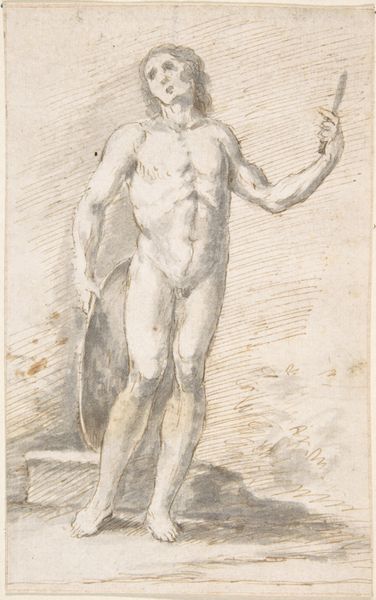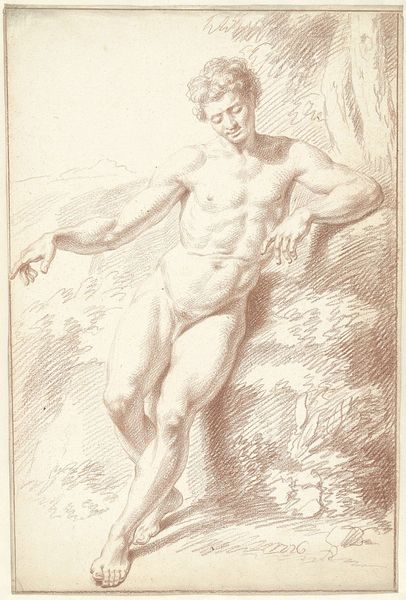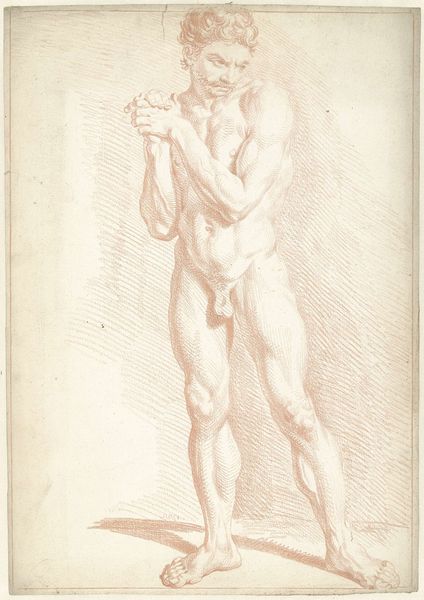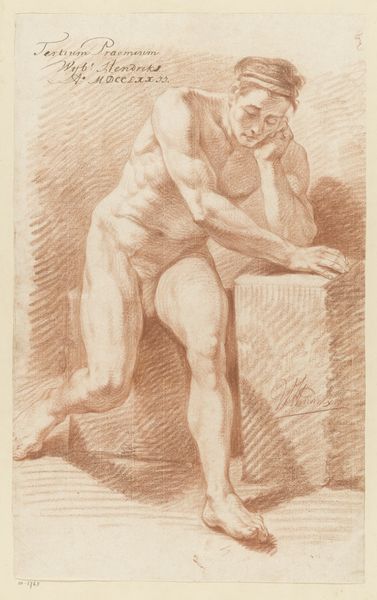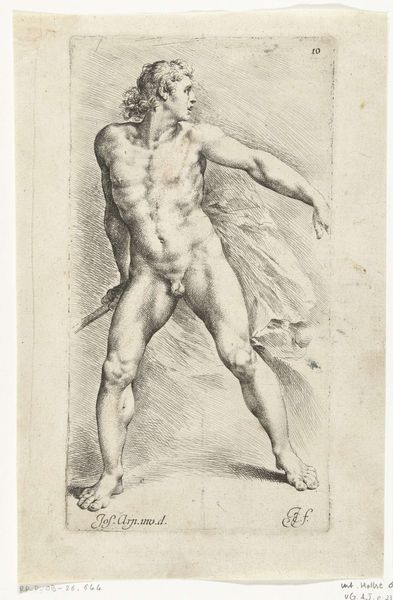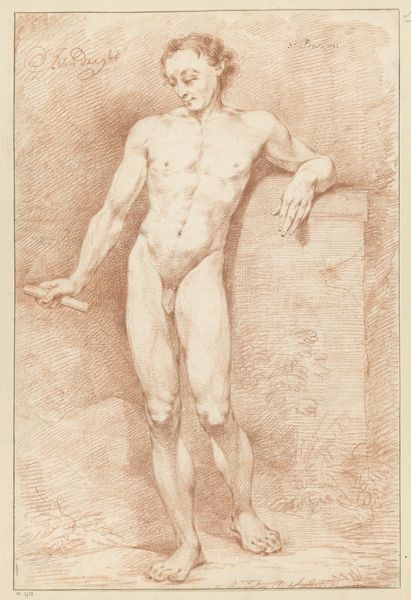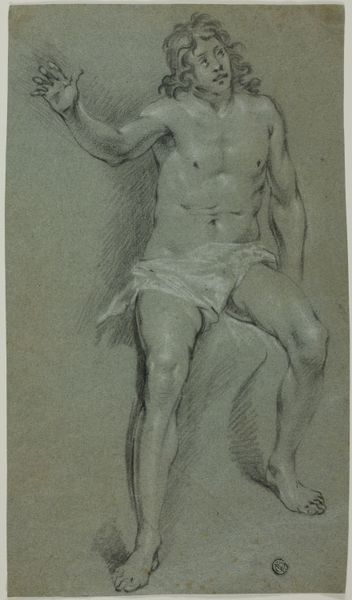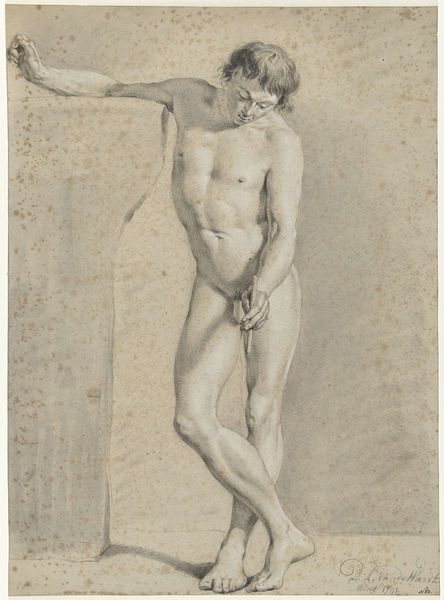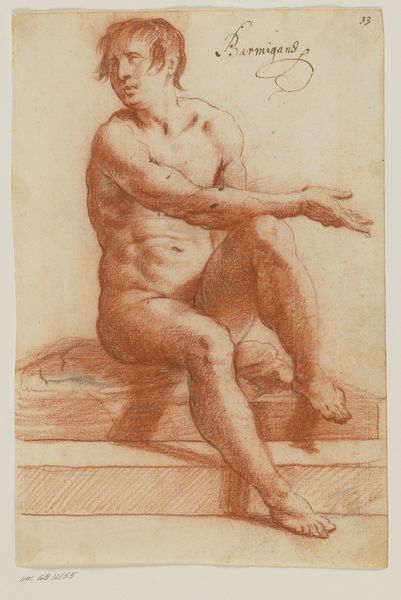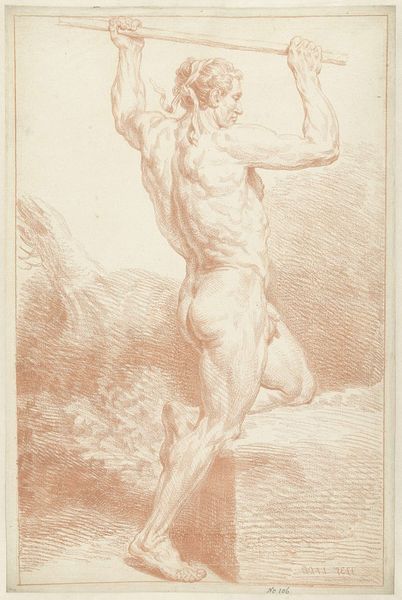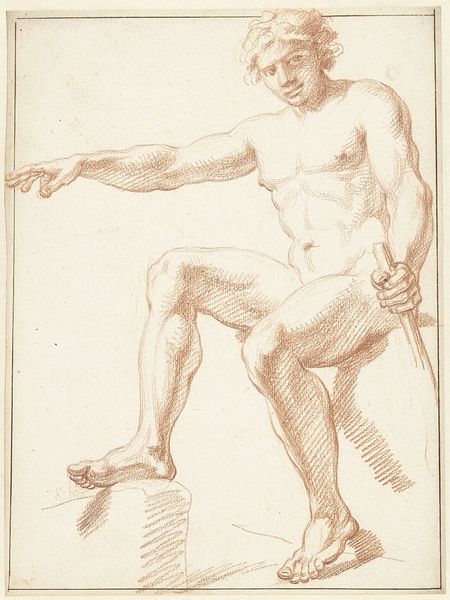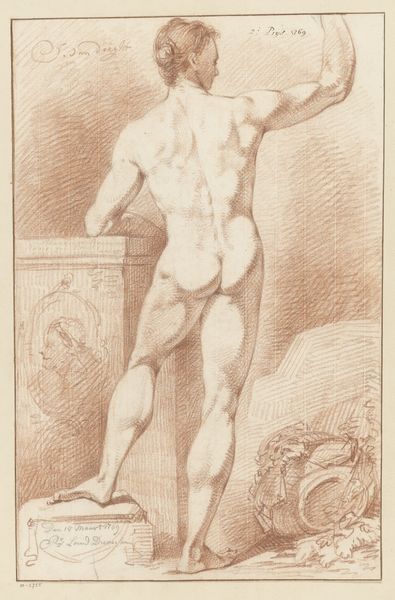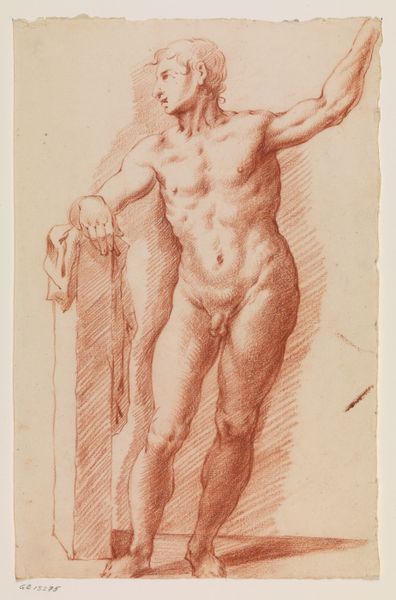
drawing, charcoal
#
portrait
#
drawing
#
baroque
#
dutch-golden-age
#
charcoal drawing
#
figuration
#
charcoal
#
nude
Dimensions: height 322 mm, width 233 mm
Copyright: Rijks Museum: Open Domain
Editor: We’re looking at "Standing Male Nude," a charcoal drawing by Adriaen van de Velde, likely created between 1646 and 1672. I’m struck by how dynamic the pose is; the man seems caught in a moment, his hand extended as if gesturing or giving direction. What jumps out to you in this piece? Curator: It's fascinating to consider this drawing within the context of the Dutch Golden Age, a period heavily influenced by humanist thought and the accessibility of the nude form. These figures often functioned as exercises for history paintings or served a pedagogical purpose within art academies. The pose, seemingly casual, is deliberately crafted. The extended arm, the contrapposto stance – they all point to a study in classical ideals adapted to a 17th-century Dutch sensibility. Does that classical training change how you view that sense of dynamism? Editor: It does! It almost feels like he’s meant to be allegorical, even in his... simplicity? I'm curious about the lack of clear mythological attributes, if he was supposed to represent a heroic ideal. Curator: Exactly! That tension – between the heroic and the everyday – is key. While figures like this one might prepare an artist to paint, say, Mars or Apollo, the very act of studying the nude challenges and potentially democratizes that ideal. Art academies emerged at this time, so studying from life would become vital. To what degree, then, does that more formalized training system and, indeed, this very work, begin to reshape public perceptions about art, bodies, and their relation to history? Editor: So, it’s not just a drawing; it's a glimpse into the changing role of art itself and who had access to create it? Curator: Precisely! These exercises become not just about portraying a body, but also reflecting the developing systems that defined what art *was* in that period, and for whom. Editor: That gives me so much more to think about than just the form! I hadn't considered the artwork as a representation of educational norms, as well as an artwork in its own right.
Comments
rijksmuseum about 2 years ago
⋮
Van de Velde often placed his models in strong raking light, which served to emphasize the body’s plasticity. Most of his male models wear a generous loincloth, yet this model – who features in at least one other drawing – evidently did not hesitate to pose in the nude. Van de Velde does not seem to have used this study for any of his paintings.
Join the conversation
Join millions of artists and users on Artera today and experience the ultimate creative platform.
